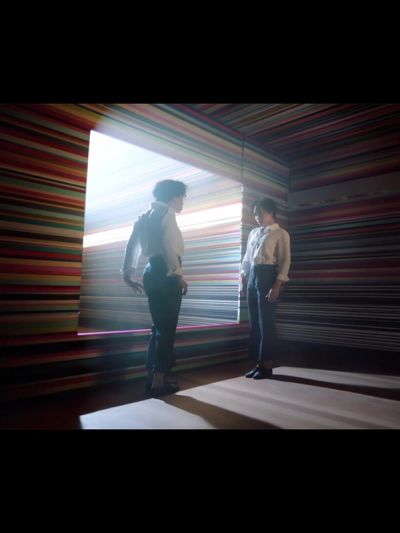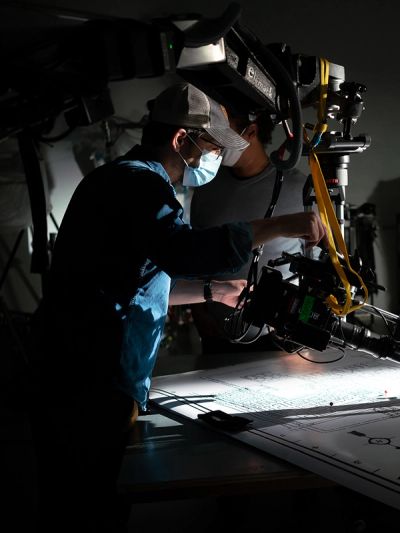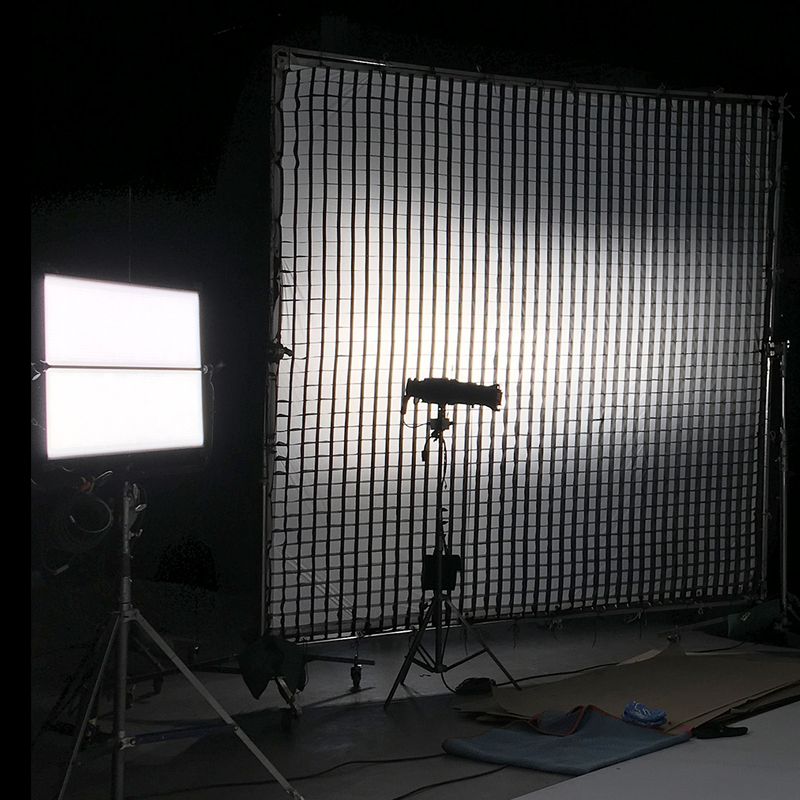
In-Camera Effects: “Keeping it Real” in a Post-Digital Culture
by Elliott Chaffer, Executive Creative Director
Creating real visual effects in-camera is something I am passionate about. Call me “old skool,” but I strongly believe that now, more than ever, it is important to create work with personality and a human touch that breaks free from the sameness of work created with today’s over-obsession with plug-ins and render engines.
I first started experimenting with in-camera effects back in the early 90s, at graphic design school. At the time, my peers were making a lot of work using the same fonts and same ideas in letterpress and Letraset. To me, it felt more instinctive to find my own way. I remember building miniature sets of hand-cut typography, exploring depth and volume with light and shadow, and capturing the image with still cameras.
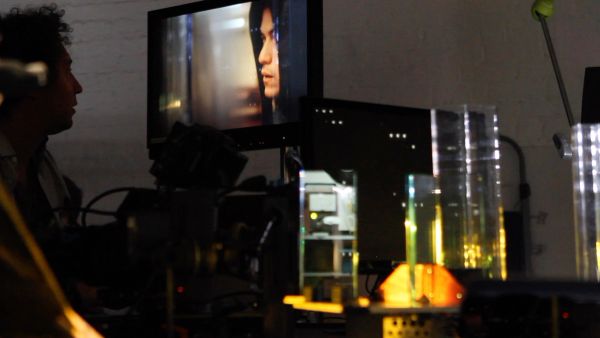
Fast forward to my first job at MTV Europe, where I started experimenting with even more motion techniques, using a rostrum camera linked up to a Quantel Harriet Paintbox system. My first boss was the late great Peter Dougherty. Working under him, I experimented with so much in the in-camera universe: projecting live action footage and animations into smoke, driving high-speed 16mm cameras through rear projected sugar glass, building circular sets of TV screens that played graphic loops off VHS tapes. I even created custom lens covers that changed the shape of bokeh into brand logos, miniatures, and reverse perspective sets.
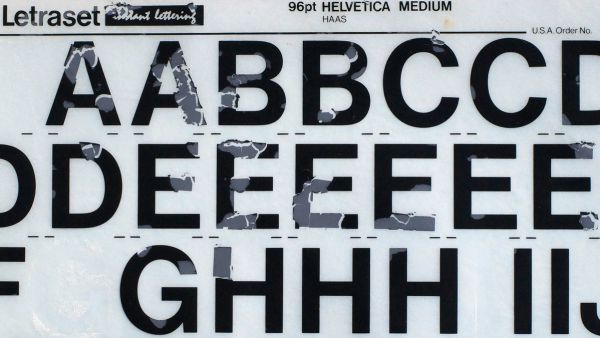
In-camera effects are often described as “organic” but I prefer to think of them more like capturing a live improvised performance by a team of engaged people, thinking and acting on their feet, vibing off of each other on set. I prefer the physicality of staying in the “now” and open to possibilities that present themselves at random rather than “just doing it” on the computer, spending all day sitting still.
These days, I work a lot with Christopher Webb at FXWRX. Chris is a cinematographer, tech director engineer, SFX artist, stop-motion animator, sculptor, and animatronic puppet builder who has his own studio and specialized gear. He strongly believes that “There is too much light pollution in the world,” and that “the level of visual noise out there is just too high.”
In my current work, I always push to maximize in-camera as possible in order to maximize the experience and minimize the post-production pipeline.
For some projects, our shots are fairly worked-out ahead of time in CG previz. That way, the shoot can just be about capturing exactly what was planned in a more “real” way, for instance, when we did the show open for Bill Simmons’ HBO show Any Given Sunday. During that shoot, we used robotic arms to rotate and tumble an array of objects in moving light, while our camera dollied in and out of the set. The visual result appeared as if all of the objects were floating in space and captured by a Phantom camera in slow motion –– except we were rolling at normal speed, with the ability to guide and direct the details of the action and light much more easily. This brought our prevized environment to life with real objects, perspective, light, and motion.
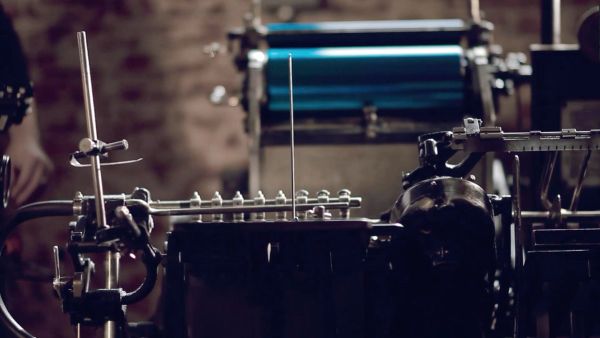
At other times, it is about having a flexible end-game in mind while exploring how much experimentation on the theme we can cram into the time allotted by the budget. For example, in our show open for NBC’s THE SLAP, we rear projected simple line animations onto a large glass plate, then racked focus from a foreground glass plate covered in similar vinyl transfers. We also projected old transparency stills into the frame, while prisms rotated in front of the lens creating caustic distortions around the edges.
In developing the process for our shoot together, Chris suggested that we put a roving camera below the glass before shooting upwards, a simple masterstroke that allowed us to stop fighting gravity and be able to capture flowing camera motions in any direction to compliment the graphics. I often joke that a job is really all about how the behind-the-scenes footage looks, and in this case, the vertically-mounted camera looked like a NASA rocket being wheeled into place.

For the Mr. Robot launch campaign, we were lucky to have a really trusting and excited client at the USA Network, who let us do our thing. They got hours of material from our process. During the shoot, Chris disassembled some old lenses and mounted the optics on small motors, allowing live manipulation of in-camera lens FX. Mini turntables, which rotated a garden of tall thick glass prisms were controlled by an iPad interface. We shot through all of the above to create rear-projected footage, while reflecting LEDs and pixelstick animations toward the edges of the prisms. In front of the camera lens, we moved optical filters with tiny robotic motors in real-time. A rotating double-sided mirror wiped light through the entire scene intermittently, while our gaffer dragged a shadow card with slats cut out of it in front of a light to create yet another layer of flickering visual interest. The key to all of this is that it was created together live, in-the-moment by many hands working together in sync.
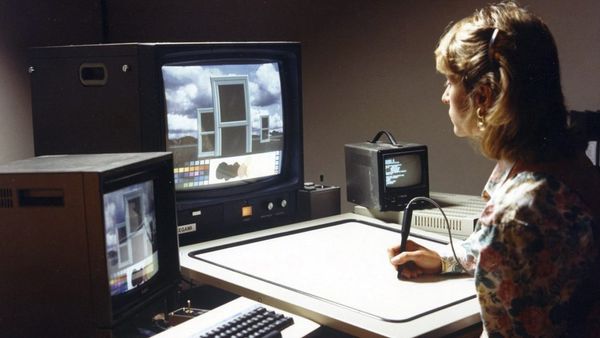
For BBC First, we rear-projected footage from 2 different shoots in New Orleans and upstate New York onto two screens and used a beam splitter glass to overlay one image onto the other. These live in-camera double exposures added an extra layer of drama and mystery to the station ID’s we created for the network’s global brand launch.
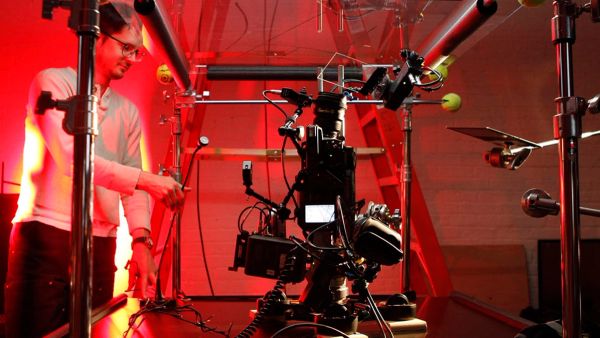
Finally, for NIKE GOLF we illuminated prototype golf clubs, shoes, and apparel with black and white animations playing off of LED screens and the real sparks from an angle grinder. This was to imbue these inanimate objects with potential energy and a sense of excitement, mystery and kinetic intensity that expressed the campaign’s tagline, “TAKE FLIGHT.” In the pre-production meeting, the client said to us that they realized they had not really seen any actual storyboards for this job yet, to which we replied, “Trust us, we know what we’re doing.” Exploration and discovery were then able to drive the shoot.
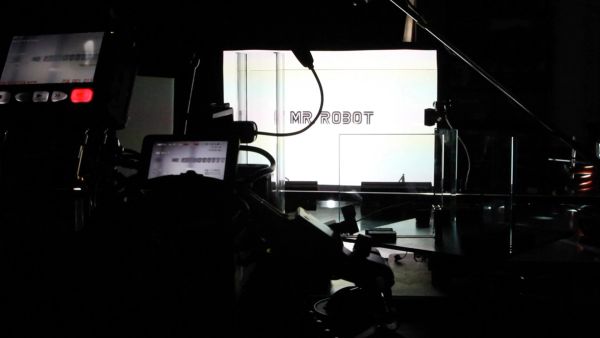
At the end of the day, in this safe modern world of “blanding” where so many products, services, experiences, brands, and bands look, feel, talk and sound the same, we want to offer a more exciting experience for the audience that arouses curiosity and makes them think how much fun that must have been to make. For clients, in-camera VFX allows for creations that are totally uniquely crafted and tailored to their needs. It’s a look they can own. For our company, in-camera effects allow us to create something together that’s different, has a lasting impression, and develops our muscle memory to build upon the next time we get the opportunity to try something new.
And hey, let’s be honest—it’s fun to play.
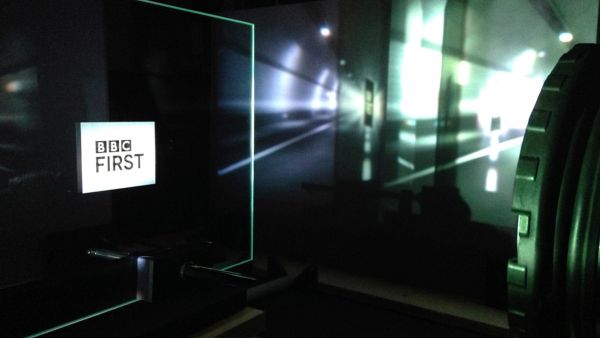
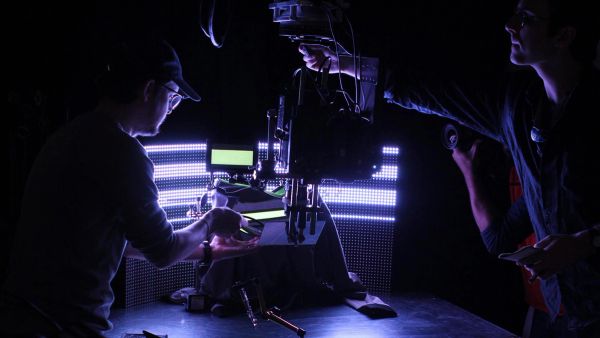
If you’re interested to learn more, Elliott will be speaking at the Motion conference in Santa Fe, New Mexico from June 5-8th. He will be sharing the stage with Chris Webb to talk about their collaborative, in-camera process while showcasing a special piece they were working on for the festival.
Explore more
New business inquiries.
How can we help?
NYC 11:05
STK 05:05
LA 08:05
Get our newsletter
Sign up for updates,
insights, and inspirations
from our studio.


